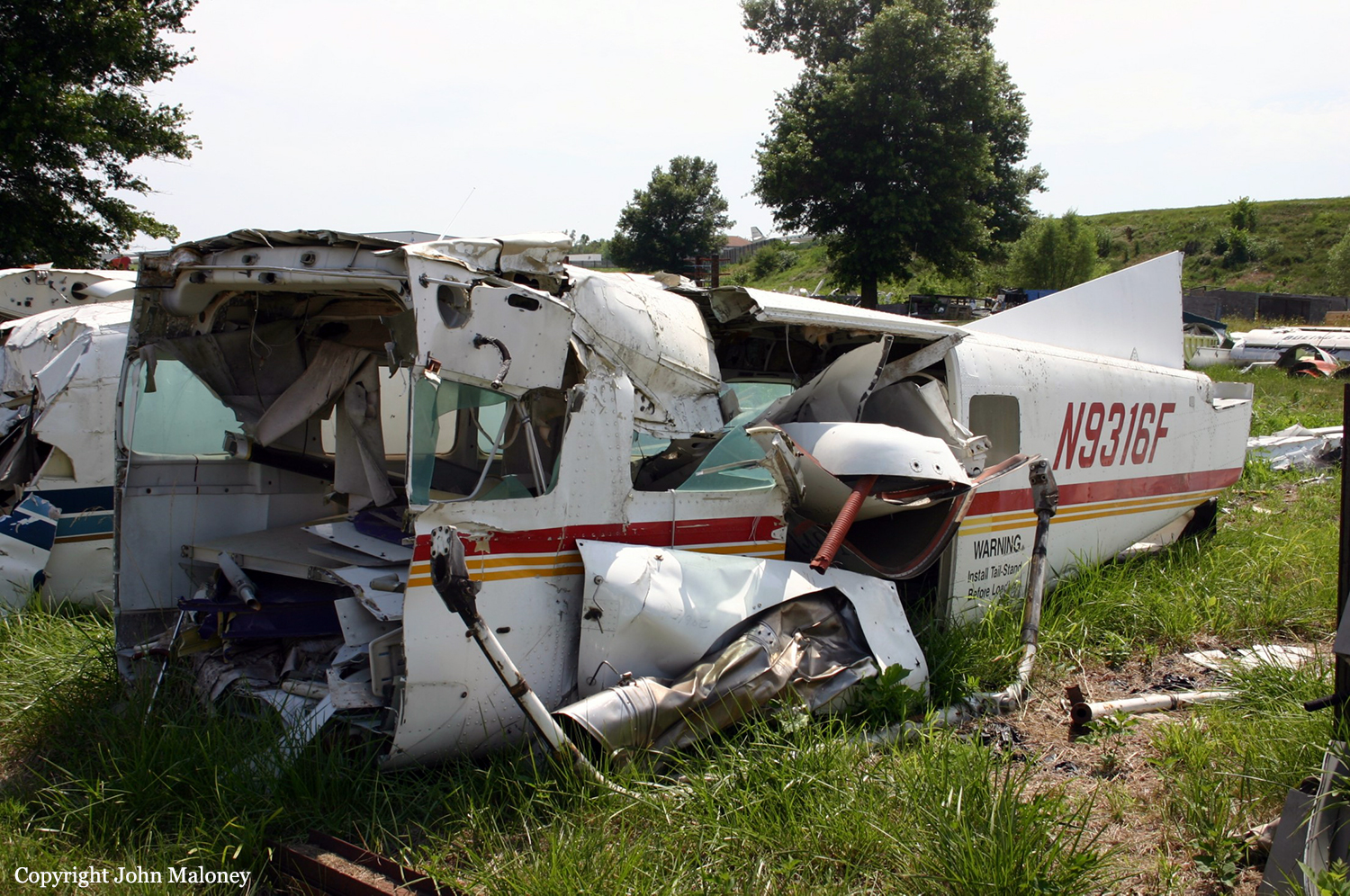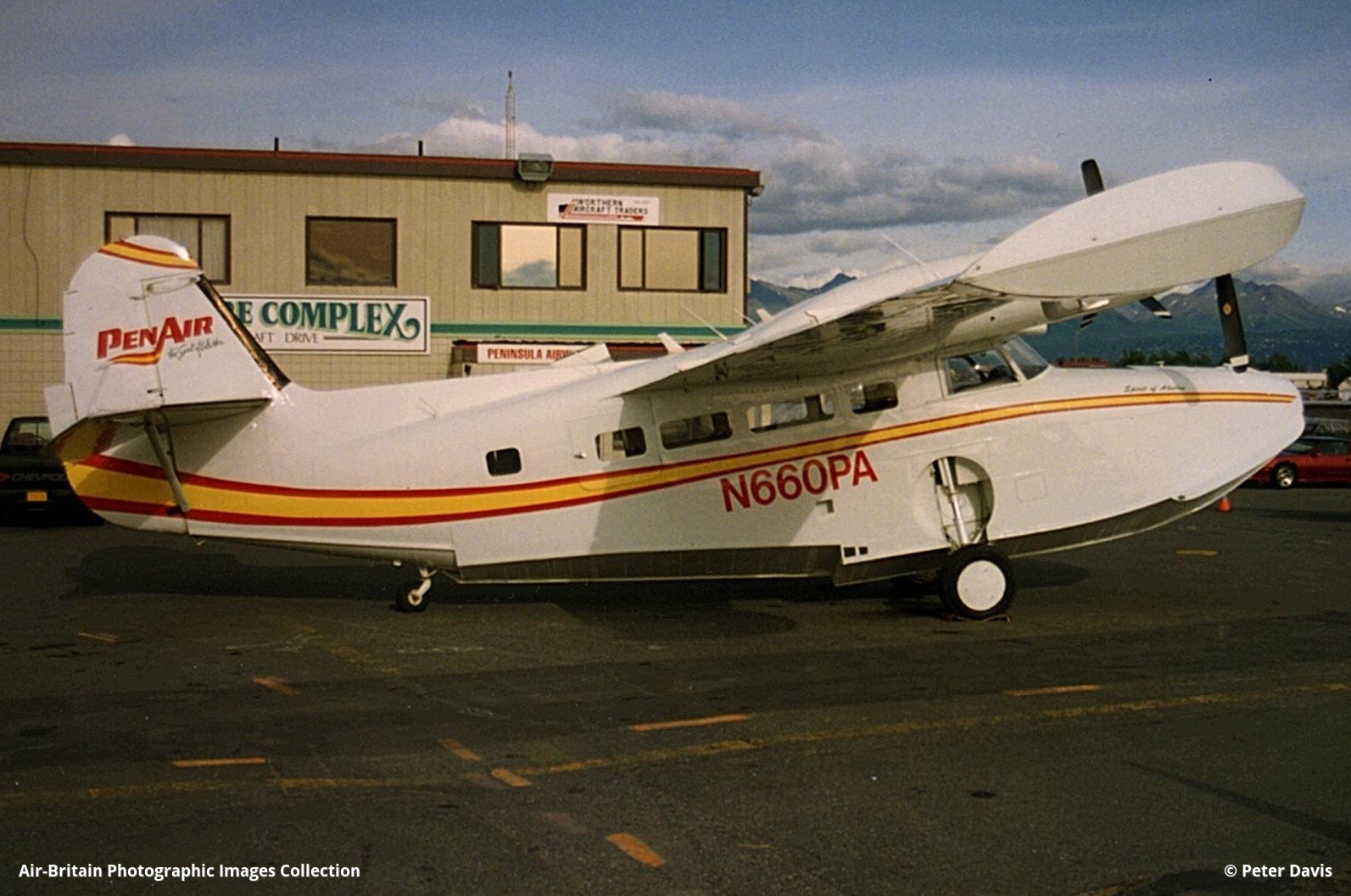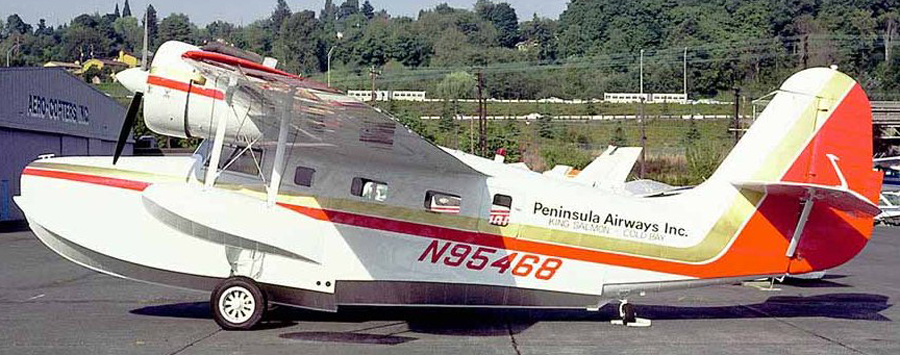Country
Operator Image

Crash of a Cessna 208 Caravan I in Port Heiden
Date & Time:
Jan 30, 1998 at 1700 LT
Registration:
N9316F
Survivors:
Yes
Schedule:
Port Heiden - Chignik
MSN:
208-0011
YOM:
1985
Crew on board:
1
Crew fatalities:
Pax on board:
0
Pax fatalities:
Other fatalities:
Total fatalities:
0
Captain / Total hours on type:
4500.00
Aircraft flight hours:
13478
Circumstances:
The pilot departed in visual meteorological conditions of three to four miles visibility with high ceilings. He stated the airplane encountered freezing rain about five miles south of the airport while in cruise flight at 1,200 feet msl, and rapidly accumulated ice on the airframe, wings, and windshield. The pilot said he initially changed altitude in an attempt to exit the icing conditions. Ice accumulation continued, so he elected to return. While maneuvering to land at the airport, the airplane was unable to maintain altitude at full engine power. He said that any angle of bank resulted in the onset of pre stall buffet, so he decided to land on a frozen lake south of the airport. He said that the airplane did not reach the lake, 'mushed into the ground,' and during the flare/touchdown, the left wing stalled. The pilot did not have access to the official weather prior to departure. The National Weather Service contracted observer, made his observation from a location about five miles south of the official weather station at the airport. The FAA AWOS-3 was inoperative. Examination of the airplane after the accident revealed a 1/2 inch layer of clear ice covering all the upper and lower airfoil surfaces of the airplane, from leading edges to between 1/3 and 1/2 of the chords. All antennas were coated with approximately 1/2 inch of clear ice. The airplane was not equipped with ice protection equipment except for pitot heat and windshield heat.
Probable cause:
The pilot's inadequate in-flight decision resulting in airframe ice accumulation to the extent that degraded aircraft performance and insufficient airspeed occurred followed by a stall. Contributing factors were freezing rain and icing conditions.
Final Report:

Crash of a Grumman G-21A Goose near Dutch Harbor: 2 killed
Date & Time:
Aug 11, 1996 at 1615 LT
Registration:
N660PA
Survivors:
No
Schedule:
Anderson Bay - Dutch Harbor
MSN:
B138
YOM:
1945
Crew on board:
1
Crew fatalities:
Pax on board:
1
Pax fatalities:
Other fatalities:
Total fatalities:
2
Captain / Total hours on type:
8000.00
Aircraft flight hours:
13381
Circumstances:
On August 11, 1996, about 1615 Alaska daylight time, an amphibious Grumman G21-G, N660PA, is presumed to have been involved in a fatal accident about 20 miles south of Dutch Harbor, Alaska. The airplane was being operated as a visual flight rules (VFR) cross-country on demand passenger flight under Title 14 CFR Part 135 when the accident occurred. The airplane, registered to and operated by Peninsula Airways Inc., Anchorage, Alaska, is presumed to have been destroyed. The certificated airline transport pilot, and the sole passenger are presumed to have received fatal injuries. Low ceilings were reported in the area of departure by the operator. VFR company flight following procedures were in effect. The flight originated from Anderson Bay, on the Island of Unalaska, about 1610.
Probable cause:
Due to lack of evidences, the exact cause of the accident could not be determined.
Final Report:

Crash of a Swearingen SA227AC Metro III in Saint George
Date & Time:
May 3, 1996 at 1630 LT
Registration:
N670PA
Survivors:
Yes
Schedule:
Saint Paul - Saint George
MSN:
AC-613
YOM:
1985
Flight number:
KS661
Crew on board:
2
Crew fatalities:
Pax on board:
11
Pax fatalities:
Other fatalities:
Total fatalities:
0
Captain / Total hours on type:
5500.00
Aircraft flight hours:
17167
Circumstances:
According to passenger's accounts, the airplane was flying low and approached the runway at an angle. The airplane made a right turn and dragged the right wing on the runway's surface. The airplane landed hard and sheared off the right main landing gear and the nose gear. The weather reported by AWOS was 300 foot overcast with a visibility of 2.5 miles with fog. The Captain stated the airplane drifted to the left side of the runway due to the crosswind, and he executed a right turn to realign with the runway. The cockpit voice recorder indicated that the stall warning horn sounded as the First Officer called for the application of power.
Probable cause:
Failure of the captain to maintain proper altitude and wingtip clearance, while aligning the airplane with the runway before landing. His delay in aligning the aircraft with the runway was a related factor.
Final Report:
Crash of a Piper PA-31-350 Navajo Chieftain in Cold Bay: 1 killed
Date & Time:
Feb 17, 1990 at 1335 LT
Registration:
N27328
Survivors:
No
Schedule:
King Cove - Cold Bay
MSN:
31-7752149
YOM:
1977
Crew on board:
1
Crew fatalities:
Pax on board:
0
Pax fatalities:
Other fatalities:
Total fatalities:
1
Captain / Total hours on type:
1000.00
Aircraft flight hours:
12690
Circumstances:
The scheduled flight's departure from King Cove was delayed due to a passing snow squall. A witness at the airport stated that the weather at the airport was good when the flight departed; however, he noted dark clouds in the direction of Cold Bay, the intended destination of the flight. The airplane did not reach its destination. It was found, where it had impacted terrain near the top of a ridgeline at the 1,250 foot level, between King Cove and Cold Bay. About 8 miles west-northwest at Cold Bay, weather reports indicated there were snow showers of unknown intensity in all quadrants. The pilot, sole on board, was killed.
Probable cause:
Continued VFR flight by the pilot into instrument meteorological conditions (IMC), and his failure to maintain adequate altitude (or clearance) from mountainous terrain. The adverse weather and terrain conditions were related factors.
Final Report:
Crash of a Piper PA-31-310 Navajo in Port Heiden: 1 killed
Date & Time:
Feb 14, 1985 at 1900 LT
Registration:
N63719
Survivors:
No
Schedule:
Becharof Lake - Cold Bay
MSN:
31-7712042
YOM:
1977
Crew on board:
1
Crew fatalities:
Pax on board:
0
Pax fatalities:
Other fatalities:
Total fatalities:
1
Captain / Total hours on type:
2250.00
Aircraft flight hours:
4284
Circumstances:
This flight originated near Becharof Lake and was destined for Cold Bay. Aircraft crashed into the side of a mountain at the 7,500 feet level, 23 miles left of course. Marginal weather conditions existed including a 35 knot right crosswind. Pilot had flown the same route about 1 hour prior to the accident. Company VFR flight plan was filed. Accident occurred at sunset. The pilot, sole on board, was killed.
Probable cause:
Occurrence #1: in flight collision with terrain/water
Phase of operation: cruise
Findings
1. (f) weather condition - obscuration
2. (f) weather condition - unfavorable wind
3. (f) weather condition - snow
4. (c) flight into known adverse weather - intentional - pilot in command
5. (c) vfr flight into imc - continued - pilot in command
6. (c) compensation for wind conditions - inadequate - pilot in command
7. (f) terrain condition - mountainous/hilly
8. (f) light condition - dark night
9. (f) in-flight planning/decision - poor - pilot in command
Phase of operation: cruise
Findings
1. (f) weather condition - obscuration
2. (f) weather condition - unfavorable wind
3. (f) weather condition - snow
4. (c) flight into known adverse weather - intentional - pilot in command
5. (c) vfr flight into imc - continued - pilot in command
6. (c) compensation for wind conditions - inadequate - pilot in command
7. (f) terrain condition - mountainous/hilly
8. (f) light condition - dark night
9. (f) in-flight planning/decision - poor - pilot in command
Final Report:
Crash of a Grumman G-21A Goose off Dutch Harbor: 2 killed
Date & Time:
Jan 23, 1981
Registration:
N95468
Survivors:
No
Schedule:
Nikolski – Dutch Harbor
MSN:
1140
YOM:
1942
Crew on board:
1
Crew fatalities:
Pax on board:
1
Pax fatalities:
Other fatalities:
Total fatalities:
2
Captain / Total hours on type:
237.00
Circumstances:
En route from Nikolski to Dutch Harbor on a taxi mail flight, the twin engine seaplane crashed in unknown circumstances into the sea off Dutch Harbor. Pieces from a wing were found floating on water while the main wreckage and the two occupants were not found.
Probable cause:
The exact cause of the accident could not be determined.
Final Report:

Crash of a Grumman G-44 Widgeon on Sanak Island
Date & Time:
Dec 15, 1968 at 1310 LT
Registration:
N148M
Survivors:
Yes
MSN:
1220
YOM:
1942
Crew on board:
1
Crew fatalities:
Pax on board:
3
Pax fatalities:
Other fatalities:
Total fatalities:
0
Captain / Total hours on type:
3000.00
Circumstances:
While taking off from a lagoon off Sanak Island, the airplane failed to get airborne, struck the shore and crashed. All four occupants were injured, two of them seriously. The aircraft was written off.
Probable cause:
The accident was probably caused by the combination of the following factors:
- The pilot failed to obtain/maintain flying speed,
- Sudden windshift,
- Quartering tailwind up to 30 knots,
- The pilot attempted to takeoff from a lagoon at low tide.
- The pilot failed to obtain/maintain flying speed,
- Sudden windshift,
- Quartering tailwind up to 30 knots,
- The pilot attempted to takeoff from a lagoon at low tide.
Final Report:
